
|   |

|   |
 e-mail: ukb7@rediffmail.com 'Online Culture': The idea whose time has come Cartoons by RK Laxman: © Dr. Utpal K Banerjee November 22, 2021 In the West, the new vogue word in the face of pandemic and the decline of all cultural institutions and practices is the revengeful coinage: 'cancel culture'! This critic would strongly recommend we counter this notion in India, take the bull by the horn and use the pandemic to create our own vogue word: 'online culture'. This is keeping in view our technology scenario: the number of computer users in the country is 14% of the population, the Internet users are 6% and the people who possess mobile is 63%. The percentages are not negligible, considering the fact that our population is around 138 crores in 2021. Working on these figures, there are roughly 19 crores of computer users, out of whom 8 crores use the Internet, while 45 crores of people possess mobiles, mostly smartphones. These are not inconsiderable figures! 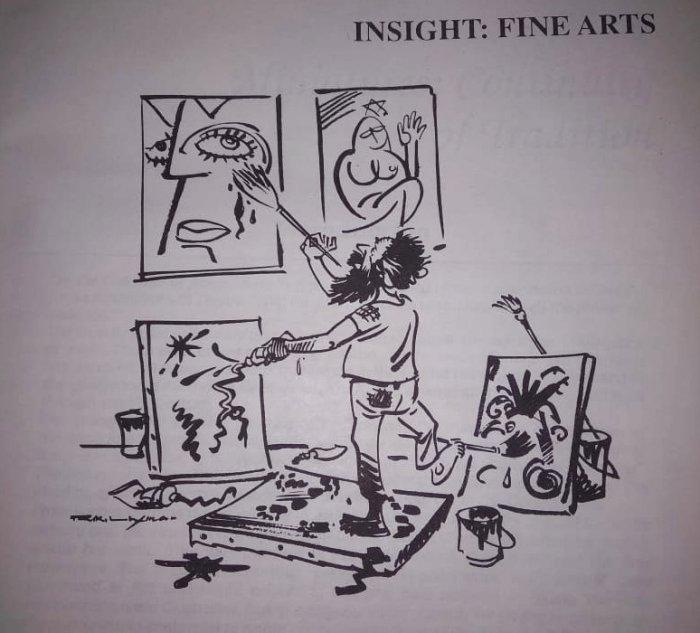 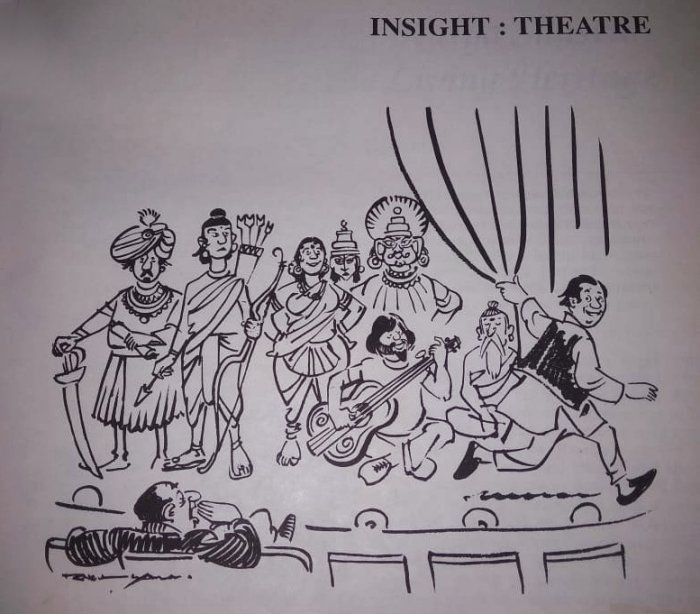 Today, the overriding benefits of using 'online culture' would be: comparative low cost for producing 'artware' on a comprehensive scale; immediate feedback during production for monitoring and modifying the process; ease of digital editing; ease of incorporating special effects; huge flexibility in production planning; ease of modification whenever needed; ease of accessing information about the ongoing process locally and through the internet; facility for 'freeze' motion and ease of reversing and reviewing; enormous utility for both individual and group learning through a myriad electronic tools like 'pan', 'zoom', 'wipe', 'fade', 'insert', 'chroma-key', etc.; minimal time for producing online, once put on a mass scale; and ease of replication - quick and cheap. Here are four specific suggestions: Training and Education: Traditionally, the teaching process is by physical contact (essentially 'one-to-one') or classroom approach which is mainly 'one-to-many' and occasionally 'one-to-one' for limited time spans. In contrast, online classrooms today can devote unlimited time span to 'one-to-one' approach. In addition, this critic would suggest formation of 'WhatsApp' groups between the arts gurus and their individual disciples -- across cities and continents - and use of the App's powerful 'audio call' and 'video call' facilities without any distance barrier -- for teaching, learning and grooming. 'Artware' lessons can thereby acquire enormous muscle power! 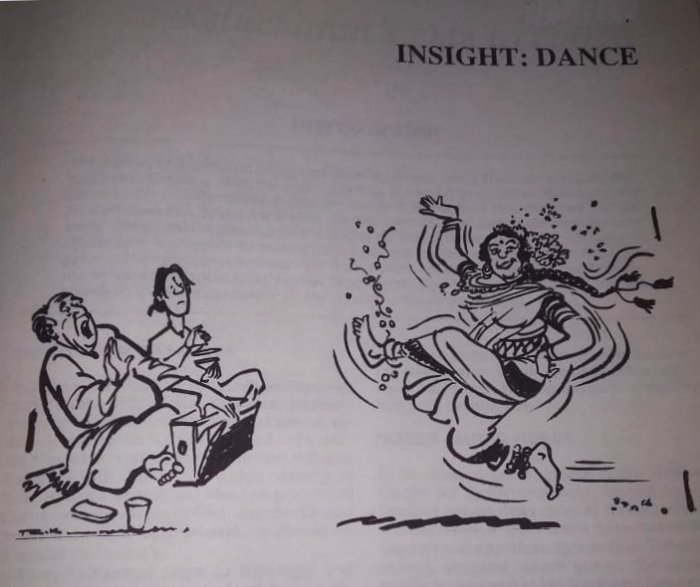 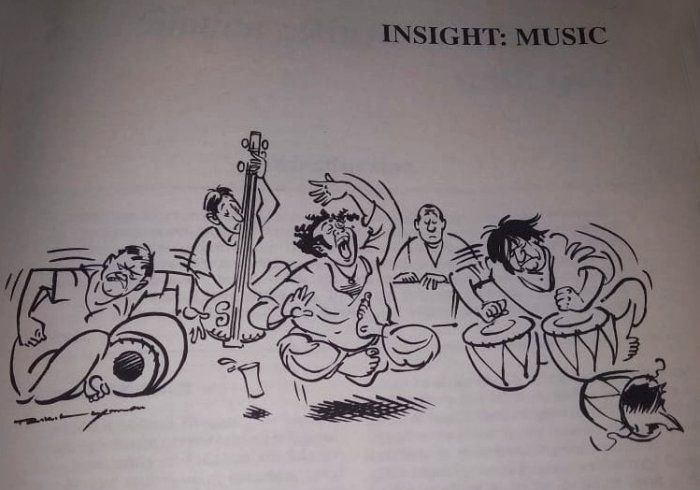 Production and Performance: This is one single area which has caught on digitally during the pandemic period with numerous experiments. In dance, Anita Ratnam-led BOXED and DEVI DIARIES series for Narthaki readership are just two illustrious cases in point. Dance, theatre and music 'artware' can, in fact, utilize digital tools to record and preserve many a memorable performance and snippet of unusual or noteworthy features that can be easily recorded and distributed - as indeed are already being done in the social media - for grabbing audience eyeball. 'Live Streaming' from digital platforms - where live audience can respond and react instantly to what are being transmitted - has been a transformational technique that has come of age. This is enriching both ways, between the performers and the audience, as well as exciting to happen instantly while memories are fresh. Innovation and Experimentation: Field trials are seldom done methodically for research and development purposes.There are always puritans and traditionalists to whom experimentation is a sacrilege and departure from the accepted practice (which itself might have undergone innumerable changes through the ages) is a total taboo. In digital age, test 'artware' can be devised almost in a laboratory condition by using artificial intelligence (AI) and tried out on a limited audience to elicit initial reactions. Pilot projects can also be commissioned and tested away from the glare of mass publicity. Awareness creation and Sensitization: Currently, most debutante audiences have less than a nodding acquaintance with the arts, as hardly any such educational package is anywhere part of the syllabi in the subcontinent. Digital media can initiate exercises -- and conveniently replicate them, too - to create audience preparedness modules. These can be in the form of elementary lessons or appreciation programmes in order to sensitize the audience. Coming to the organsational side, one has to ensure the means of design, development, implementation, storage and delivery of the different forms of 'artware' outlined above. Our regional cultural centres (EZCC, NZCC, SZCC and the rest) could be the ideal places to be suitably equipped with full-fledged studios for producing 'artware' for the entire land. [To set the records straight, the above suggestions were incorporated, with the then available digital and 4G computer technology, and with far more details, in the chapter "Electronics for the Arts" in this critic's book, Indian Performing Arts (1992: Vikas Publishing House, New Delhi, Copyright: author). In her erudite Foreword, Dr. Kapila Vatsyayan wrote: The essays which deal with the performing arts in electronic media exhibit a freshness of approach as also a balanced view of the possibilities of a dialogue between traditional art forms and new technology. The potential of the use of electronic media and computers not only for storing and recording data, but also for new creations points at a direction, which young artists might follow. The new generation of performing artists, composers, musicians, and dancers will use electronic media for choreographical patterns. Not content with writing this, she sent this critic to the then Minister of culture, Shri Vasant Sathe, with her recommendation, who enthusiastically sent the ideas to his secretariat. Unfortunately, the records would reveal that no initiative was visible at the available secretariat levels and nothing came out of the whole effort.] In conclusion, this critic would fondly recall that in the 1980s and the 1990s, one had the opportunity of seeing the very best of the culture from the East and the West brought to this country. This critic for instance, had witnessed Moscow's Bolshoi Theatre production at the Rabindra Sadan in Kolkata, German dancer Pina Bausch's Tanztheater at the Siri Fort Auditorium in Delhi, and Merce Cunningham's Happenings from the USA, with John Cage's Musique Concrete, at the NCPA auditorium in Mumbai - the latter followed by a dinner thrown by the ICCR with the celebrated artistes, where one could interact with the director and the artistes. Such physical performances are no longer needed in the digital age, but the best of the Eastern and the Western cultures could still be brought to India most conveniently by using the digital recordings through Internet by the ICCR at a minimal cost. 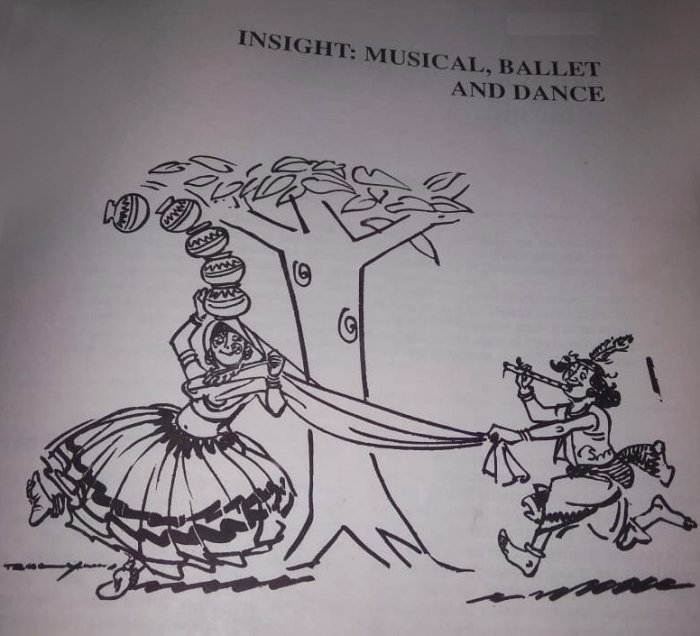 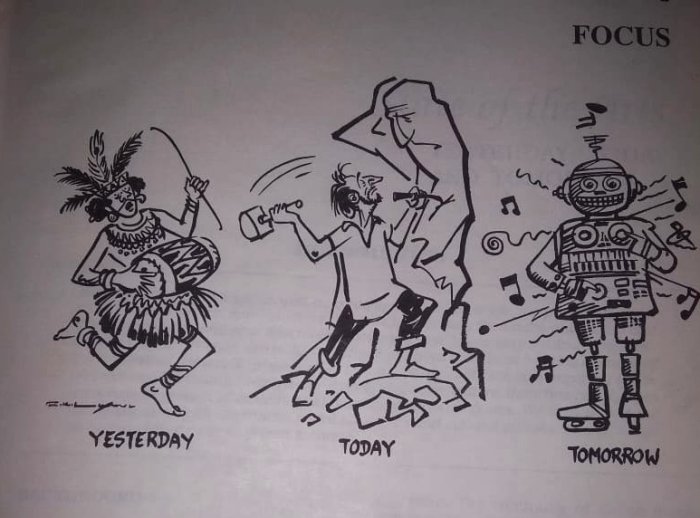 By way of illustration, one could mention that the birth bicentenary of Fyodor Dostoyevsky, one of the world's greatest novelists, fell on last November 11, which was observed over the entire Europe with plays and dance dramas based on his immortal creations like Crime and Punishment, The Idiots, The Gamblers and Brothers Karamazov. These productions could easily have been brought digitally by the ICCR to the culture loving Indian cognoscenti at next to no cost, using Indian Missions and ICCR's own Nehru Centre in Moscow. Again in parallel with India's political 'Quad' with Australia, Japan and the USA, the ICCR could form a 'Cultural Quad' with these three culturally rich countries and bring current cultural products digitally for the Indian viewers at a minimal cost. One could even venture to suggest that the ICCR could conveniently open a digital channel at its own Website and regularly arrange viewing of the overseas cultural products under a regular program that can be named "Best of East and West"! The sky, in fact, is the limit in our digital age! [Almost parenthetically, it may be added that this critic's book Indian Performing Arts, cited above, was illustrated by a bouquet of light-hearted illustrations by his good friend, and India's most renowned cartoonist, RK Laxman. After the book went through many editions and several reprints, the publishers stopped further prints, and there was little chance to see such gems of cartoons anymore, as Laxman was apparently in no mood to draw on performing arts for his own reasons. Those illustrations are offered here for Narthaki's readership for one more viewing -- to commemorate the birth centenary of our foremost illustrator.]  Dr. Utpal K Banerjee is a scholar-commentator on performing arts over last four decades. He has authored 23 books on Indian art and culture, and 10 on Tagore studies. He served IGNCA as National Project Director, was a Tagore Research Scholar and is recipient of Padma Shri. Post your comments Pl provide your name and email id along with your comment. All appropriate comments posted with name and email id in the blog will also be featured in the site. |